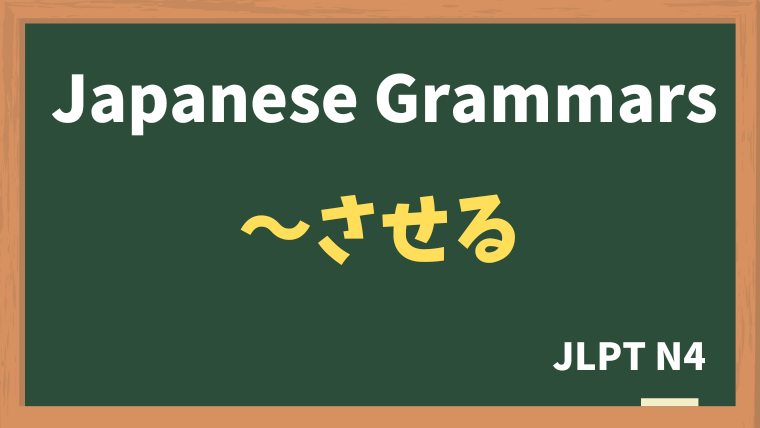
Explanation:〜させる
fa-check-circleMeaning
The expression 〜させる in Japanese is used to indicate causative form, meaning "to make/let someone do something" or "to allow someone to do something." It is often used when someone has the power or authority to cause an action in others or to give permission.
fa-check-circleForm
- Verb Stem + させる (For Group 1)
- Drop the last syllable of the verb stem and replace it with the -a sound + せる.Example: 行く (iku) → 行かせる (ikaseru) - "to make/let (someone) go."
- Verb Root + させる (For Group 2)
- Simply remove る (ru) and add させる.Example: こたえる (kotaeru) → こたえさせる (kotaesaseru) - "to make/let (someone) answer."
- Irregular Verbs (For Group 3)
- する (suru) → させる (saseru) - "to make/let (someone) do."
- くる (kuru) → こさせる (kosaseru) - "to make/let (someone) come."
fa-check-circlePoints
- Causative Form: Indicates that someone is causing or allowing someone else to do something.
- To Make or Allow: The meaning depends on context. It can mean "to make someone do something" or "to allow someone to do something."
- Usage in Commands, Requests, or Permissions: 〜させる is used to show commands, requests, or permission granted by the subject to someone else.
fa-check-circleJLPT Level
N4
Sample sentenes
母は 弟に 野菜を 食べさせた。
My mother made my younger brother eat vegetables.
先生は 学生に レポートを 書かせた。
The teacher made the students write a report.
お母さんは 子どもに 部屋を 片付けさせた。
The mother made her child clean the room.
母は 弟を 買い物に 行かせた。
My mother made my younger brother go shopping.
友達に 新しい ゲームを やらせてあげた。
I let my friend play the new game.






